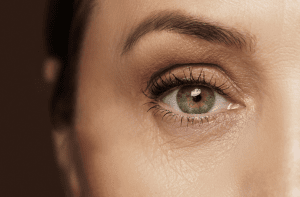The Eyes Have It: New Drug Vabysmo Receives FDA Approval
By Andrew Briskin
 Vabysmo, a new drug manufactured by Roche, was recently approved by the FDA to treat two common eye diseases. Find out more about this medication and how it might help you.
Vabysmo, a new drug manufactured by Roche, was recently approved by the FDA to treat two common eye diseases. Find out more about this medication and how it might help you.
In January, Roche announced the FDA approval for Vabysmo, a new drug for the treatment of two eye diseases that are leading causes of vision loss – diabetic macular edema (DME) and age-related macular degeneration (AMD).
Along with diabetes-related retinopathy, DME and AMD are two of the most common eye-related complications linked with diabetes, and they are among the leading causes of blindness worldwide.
The National Eye Institute estimates that 11 million Americans have AMD and approximately 7.7 million Americans have diabetic retinopathy. Of these 18.7 million, about 750,000 also have DME.
“If you start having symptoms of vision loss like seeing floaters, blurring, or distortion of vision, set up an appointment with your eye doctor immediately,” said Dr. David Eichenbaum, clinical investigator in the phase 3 trials for Vabysmo and a practicing retina specialist since 2007. “The sooner we are able to identify DME or wet AMD, the quicker we can treat and address the disease.”
AMD damages the macula, located in the center of the retina (the light-sensitive layer behind the eyeballs) and is responsible for your most vivid, central vision. There are two types of AMD: dry and wet. Dry AMD occurs when the macula gets thinner as a result of aging and may progress slowly over time.
Wet AMD occurs when abnormal blood vessels grow under the retina; these blood vessels may leak and cause fluid buildup. While dry AMD is more common and progresses gradually, wet AMD can result in more rapid vision loss. Vabysmo can be used as a treatment for the wet form of AMD.
DME occurs as a result of having diabetes, while AMD is mainly driven by aging and occurs in people over the age of 50. That being said, having diabetes is associated with an increased risk for AMD.
“Consistently high blood sugar due to poor glucose control over time can damage small blood vessels in the eye,” said Eichenbaum. “So, a person who has poorly controlled diabetes is most at risk for developing DME. Wet AMD occurs in people who’ve already had dry AMD, even if they didn’t know they had it. DME can occur at any age, unlike wet AMD, which often occurs in people 50 years and older. A person’s age, family history, and history of high blood pressure can all put a person at risk for wet AMD.”
This FDA approval of Vabysmo comes after four studies were conducted supporting its effectiveness In these trials, which included over 4,000 total participants, Vabysmo was compared with Regenron’s Eylea, currently the most commonly used treatment for both wet AMD and DME.
Vabysmo works by targeting and inhibiting two disease pathways that are thought to destabilize blood vessels in the eye, causing new leaky blood vessels to form and increasing inflammation. By stopping these blood vessels from growing, Vabysmo may decrease the risk of bleeding and fluid buildup in the eyes.
“We have a lot of firsts with Vabysmo,” said Eichenbaum. “Vabysmo is the first bispecific antibody designed for the eye, which means that it simultaneously treats two targets causing eye disease instead of the single target we have treated for the past 15 years.”
In all four studies, researchers concluded that Vabysmo was as effective as Eylea in treating vision loss from wet AMD and DME. In addition, Vabysmo also caused fewer side effects and was associated with fewer health risks than Eylea.
Perhaps the most significant advantage of Vabysmo is the potentially reduced frequency of treatment. Both Vabysmo and Eylea are administered by injection to the eye, requiring a clinic visit. In the most recent studies, over half the participants on Vabysmo went four months between treatments while maintaining improvements in vision after the initial administration of monthly eye injections; over 75% maintained vision improvements with at least three months between treatments.
In comparison, people on Eylea receive injections bimonthly. These study results demonstrate that not only does this new treatment potentially reduce the frequency of required in-clinic visits and injections to the eye, but it could also reduce the cost of treatment based on the need for fewer doses. The decreased injection frequency may also improve quality of life.
“Because Vabysmo extends the time between treatments for [DME and wet AMD], it allows for greater flexibility and is likely to have a ripple effect on a person’s overall quality of life,” said Eichenbaum. “Going to your eye doctor every month for an injection can impact everyday life, interrupting things like work or family life, or vacation. At the very least you have to plan around those appointments. When you extend the time between treatments, you give people back time to do the things they love.”
To learn more about the importance of eye health, check out diaTribe’s resources here.








